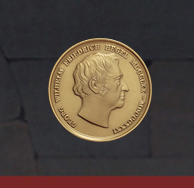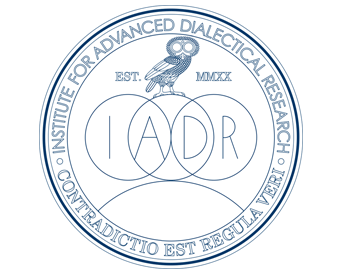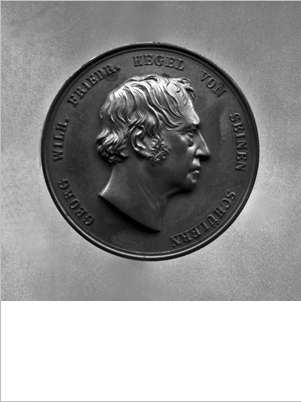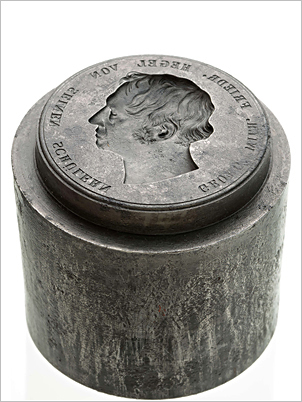         |
||||||
   |
||||||
|
|
DIALECTIC
MEDAL The design of the front-side of the medal (LEFT) is based on a commemorative portrait medallion (BELOW) that Hegel received from his students in celebration of his election as Rector of the University of Berlin in 1830. He proudly sent a copy to his sister Christiane in Stuttgart, telling her: "I have not only been engraved and sculpted, but now stamped [on a medal] as well!" He sent another to his friend Goethe in Weimar, who added it to his collection of approximately 2,000 European coins and medals. Goethe wrote of this gift: "The praiseworthy profile has turned out very well in every respect." This specimen (BELOW) remains in the collection of the National Goethe Museum in Weimar and served as the model for the Institute’s Dialectic Medal. The Institute wishes to thank the Goethe-Nationalmuseum for their invaluable assistance in creating this award, as well as the Münzkabinett for locating and photographing the original dies from the Berlin Mint. (BELOW) The rear of the medal (LEFT) displays the name and emblem of the Institute surmounted by the Owl of Minerva, which Hegel mentions in the preface to his book. Elements of the Philosophy of Right. Inscribed below is the motto of the Institute, Hegel's first habillitation thesis:Contradictio est regula veri (“Contradiction is the rule of the true”). Each medal is accompanied by an individual citation and signed diploma inscribed with the recipient's name and embossed with the raised seal of the Institute. RECIPIENTS |
|||||
|
Original
medal
given by Hegel to Goethe Goethe-Nationalmuseum,
Weimar |
Original
die used to strike the medal commissioned by Hegel's students |
|||||
  |
|
 |
||||
|
© 2O2O–4 INSTITUTE FOR ADVANCED DIALECTICAL RESEARCH |
||||||



